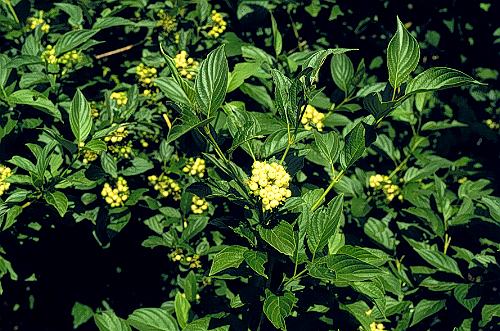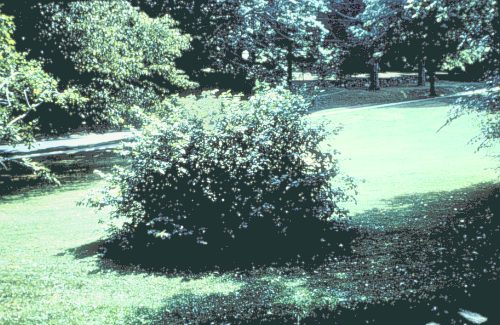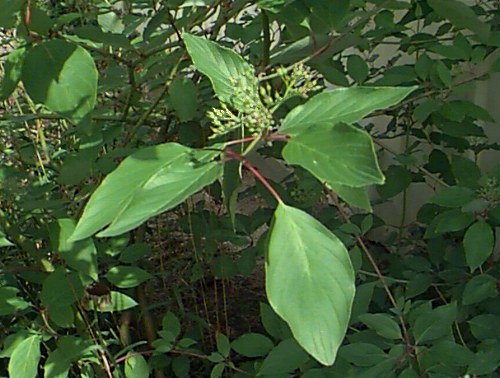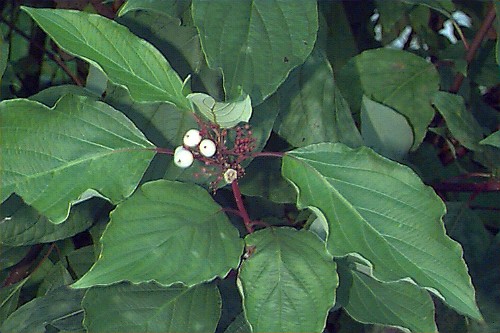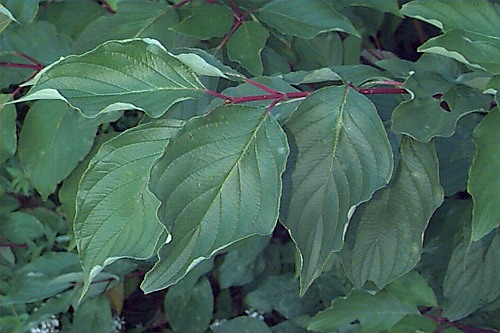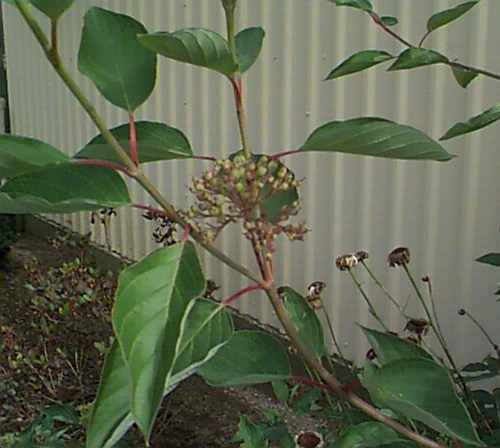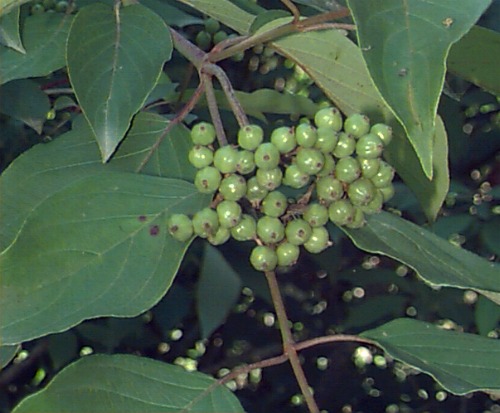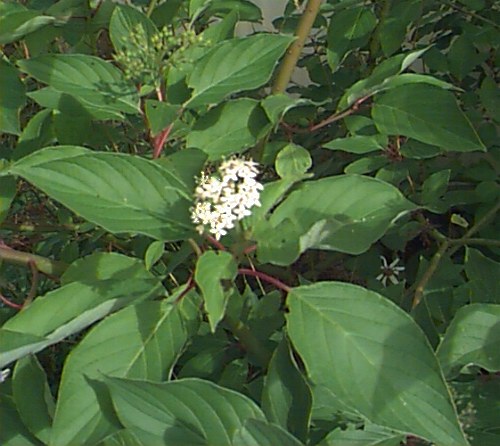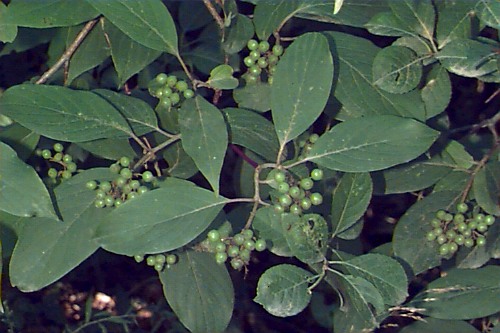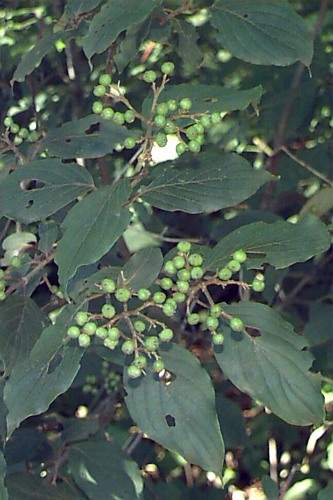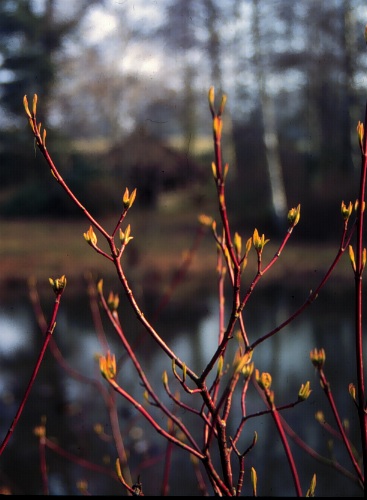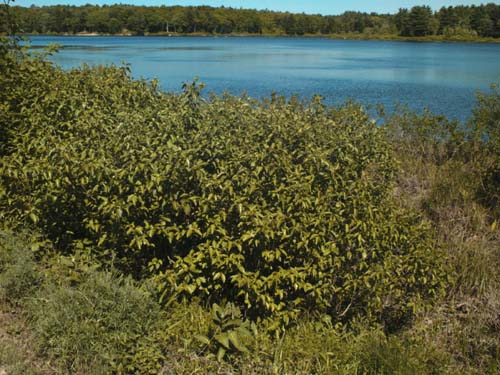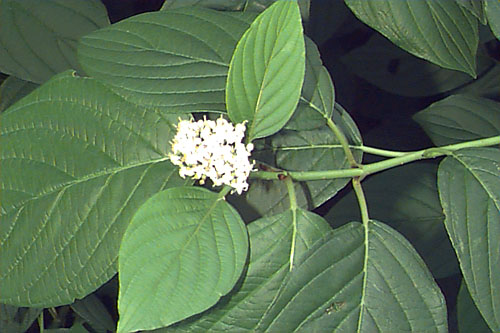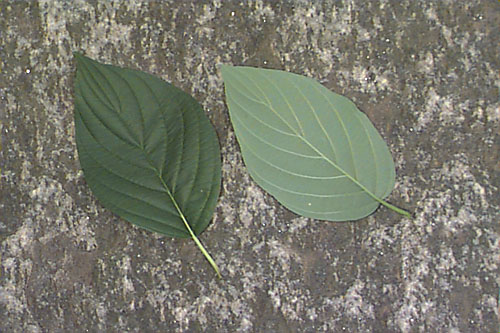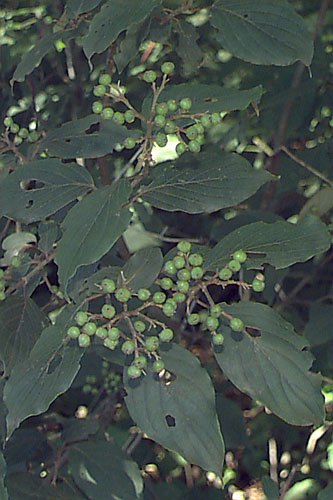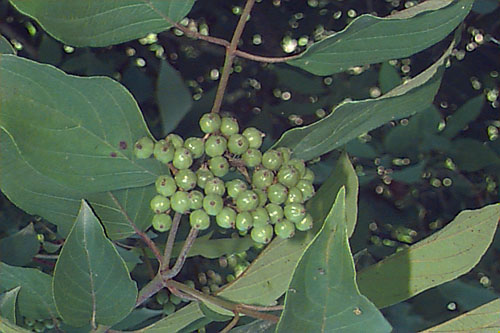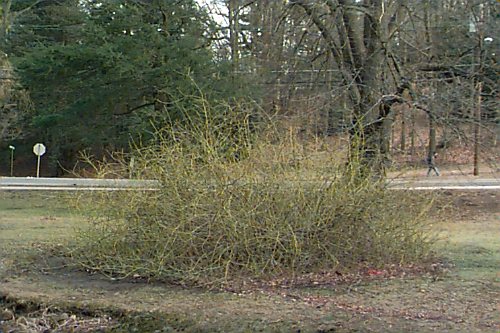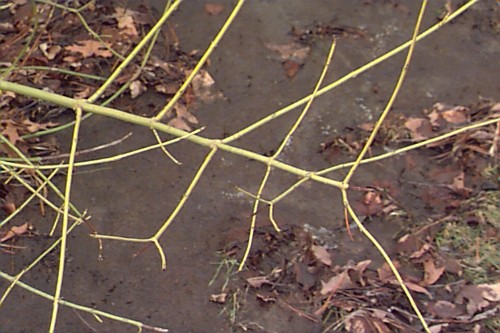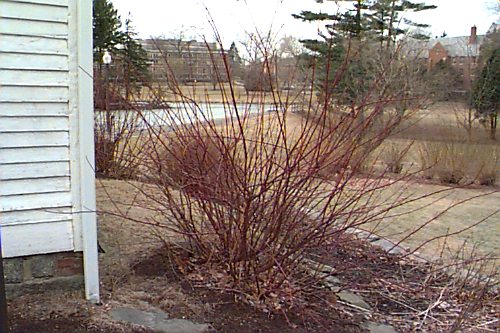Cornus sericea
Redosier Dogwood
Cornaceae
ExpandHabitat
- hardy to zone 3; possibly 2
- native from Newfoundland to Manitoba, south to the central United States. It is even found on the west coast of the United States and down into the mountains of Arizona and New Mexico
Habit and Form
- a deciduous shrub
- 6' to 10' tall with an equal or greater spread
- shape is rounded and spreading
- loose and somewhat open
- multistemmed
- stoloniferous
Summer Foliage
- deciduous simple leaves
- opposite leaf arrangement
- ovate leaves with rounded bases and acuminate tips
- 2" to 5" long and 1" to 2.5" wide
- medium to dark green color
Autumn Foliage
- turning a dull or rich purple-red
- variable, but usually good
Flowers
- in 1.5" to 2.5" diameter flat clusters
- dull white
- individual flowers are quite small
- bloom time is late May to early June
- moderately ornamental, but not exceptional
Fruit
- white to pale blue in color
- noticeable in August and September
- individual fruits are 0.33" in diameter
Bark
- stems are reddish (purple-red) from late summer into early fall
- color brightness to a strong red during winter
- red color changes to green at the onset of spring
- stem color is quite showy
Culture
- easily transplanted
- quite adaptable to many soils, but likes moisture
- full sun to light shade
- easily grown
- periodic removal of old stems produces vigorous new shoots with vivid stem color
Landscape Use
- as a screen
- shrub border
- mass plantings or groupings
- soil stabilization due to stoloniferous habit
- most useful for red stem color in winter
Liabilities
- twig blight (stem canker)
- leaf spot
- scale
- needs periodic rejuvenation pruning to maintain vivid stem coloration
ID Features
- multistemmed and stoloniferous
- red stems in winter
- white to pale blue fruit
- fruit is borne in late summer and early autumn in comparison to C. alba which produces fruit in June and July that does not persist
- flat clusters of small white flowers
Propagation
- cuttings root easily
- by seed
Cultivars/Varieties
f. baileyi (also listed as 'Baileyi' or C. baileyi) - Of questionable identity, but widely sold for its red winter stem color, good flower and fruit traits and red-purple fall color. Grows to 9' tall and wide.
'Cardinal' - A common form popular for its good bright red stems in winter, though the color may be yellowish in warmer zones. Fairly disease resistant, the plant grows to 10' tall and wide. Renewal pruning in early spring promotes best stem color.
var. coloradensis - A wide-ranging western variety with smaller leaves, red-brown stems and bluish fruit.
'Flaviramea' - A highly popular form with stems that turn bright yellow in winter instead of red. Fairly susceptible to canker, thus C. alba 'Bud's Yellow' may be preferable. An effective plant for bright winter color, but the plant can be garish in mass.
'Isanti' - A more dwraf form that grows 5' to 6' tall and 8' to 10' wide with a mounded habit. It is compact, dense and slow growing. Fruits heavily, but can be susceptible to leaf spot.
'Kelseyi' - A true dwarf form, only growing to 3' tall. The red stem color and fall foliage color is inferior to other forms, and some reports indicate that it may be more prone to leaf spot disease.
'Silver and Gold' - A sport of C. s. 'Flaviramea' that is gaining popularity and becoming more popular. The stems are yellow, but most unusual are the variegated leaves, which sport an irregular yellow border.

